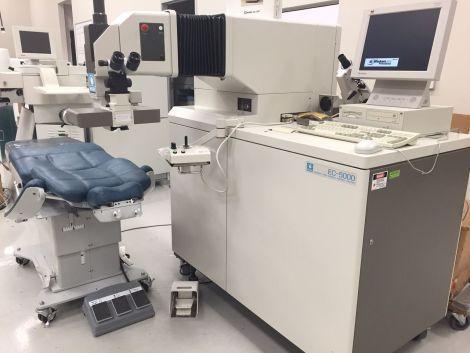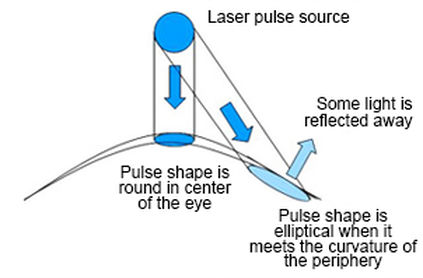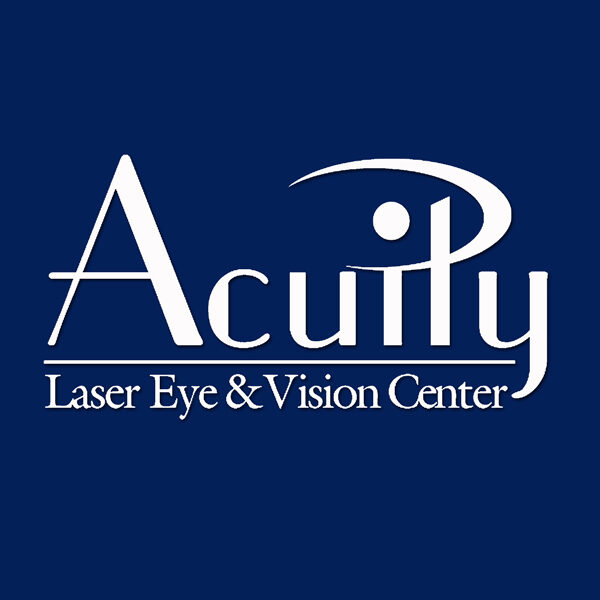When you choose custom laser vision with the Nidek Exclimer system you are choosing one of the most advanced and innovative options for laser vision correction.

The Nidek Difference
One of the most innovative features of the Nidek Excimer laser system is the way it incorporates wavefront optimization in rendering the laser vision correction treatment. This laser system takes into account the starting curvature radius of the cornea being treated. Furthermore, the Nidek laser system optimizes treatment so as to preserve the most normal curvature characteristics (and thereby optimize visual quality) as a consequence of treatment.
In laser systems that treat nearsightedness, the central optical zone , which is the area of full vision correction, is placed on the front of the cornea; that results in a flattened circular area that ends with an abrupt edge without a transition zone, causing unwanted side effects like poor night vision, glare, and halos. Laser treatment plans (known as algorithms) have evolved somewhat over time to apply peripheral treatment in a blend zone around the optical zone. This is called a transition zone.
A problem arises, however, in treating the peripheral cornea with other laser systems that does not occur with the Nidek Excimer laser. Most other excimer lasers are designed to be calibrated on flat plastic test surfaces. However, the cornea is curved, and when treating on the down-slope of the domed surface (everywhere but the top dead center of the dome), some laser energy is scattered rather than being absorbed by the target tissue. This is known as the cosine offset-correction effect, as the amount of scattering is proportional to the cosine of the tangent at the point of laser contact to the cornea. This problem becomes more pronounced the more peripheral the laser aims from “straight above”.
As an explanation, imagine the eye as a glass sphere. If you took a round flashlight and aimed it directly at the top of the sphere, the light would form a round shape on the surface of the ball. If you now aimed the flashlight towards the side of the ball, the light would form an elliptical shape and not seem as bright anymore. This is because the same amount of light is distributed over a larger area, and some of the light is reflected away due to the angled surface.
The illustration below demonstrates the need for additional pulses to be applied to the peripheral corneal surface, so as to compensate for the energy lost through this reflective scattering.
When performing custom laser vision correction with the Nidek Excimer laser system, the laser intentionally applies additional pulses to the peripheral cornea in order to compensate for the oblique angle of the laser beam. In this manner, the laser anticipates and corrects for any cosine offset issues. Furthermore, the laser treatment is specifically designed to preserve the naturally aspheric shape of the cornea to much greater degree than most other excimers lasers can achieve. The Nidek system also incorporates a scanning slit laser technology, rather than a broad beam laser, which many other excimer vision correction systems have, thus allowing for a more precise removal of corneal tissue.These improvements produce a smooth, cleanly sculpted optical pattern on the cornea when performing LASIK or PRK. A good analogy here would be to compare image quality produced by the lens of a small consumer camera (other laser systems) to that produced by a high quality lens that professional photographers use (our Nidek system). Another way of thinking about it would be to make the analogy of using a jackhammer versus chiseling a fine artistic sculpture to reshape a block of stone.
The combination of correction for cosine-offset, plus the aspheric treatment design preserving optimum corneal shape, plus the high quality scanning slit beam technology in aggregate form the basis for calling it CUSTOM laser vision correction.


